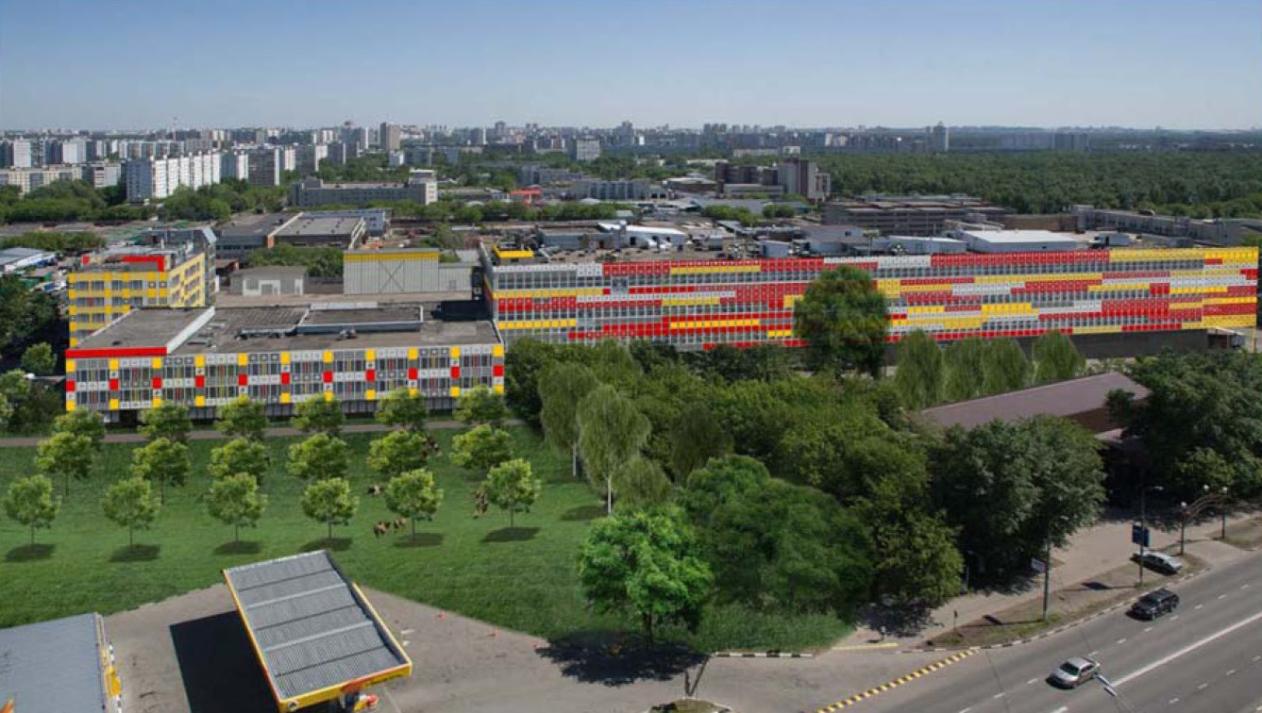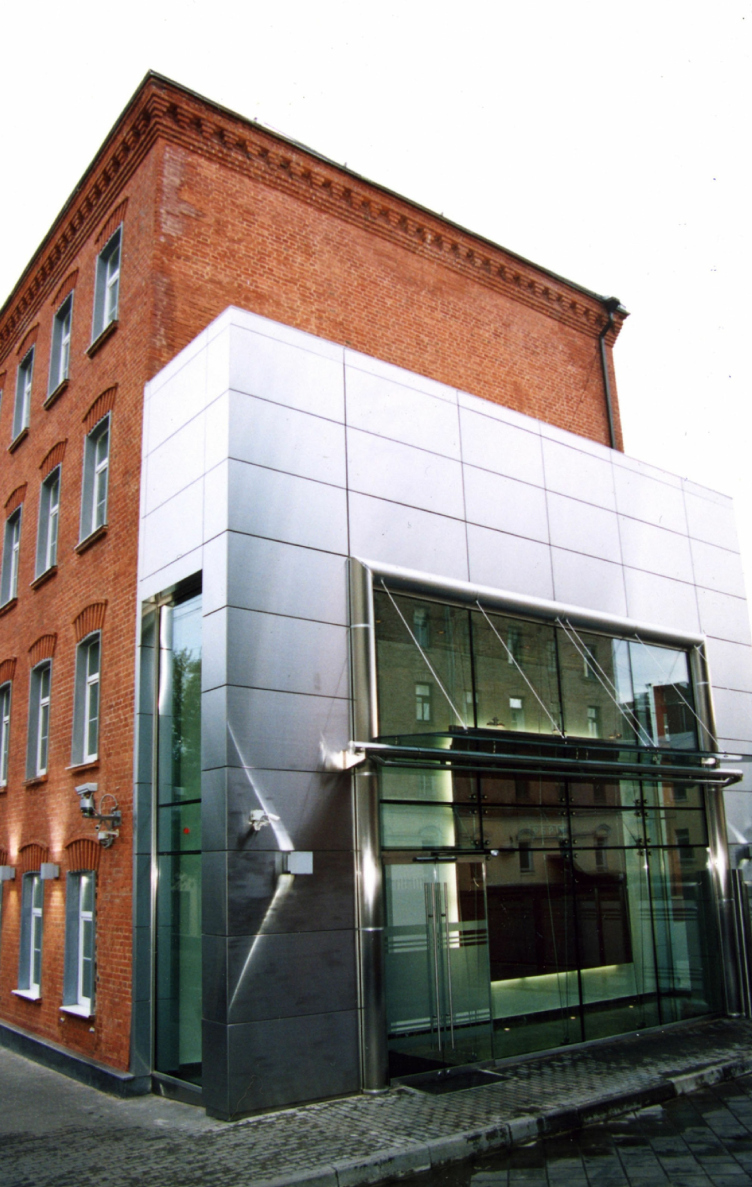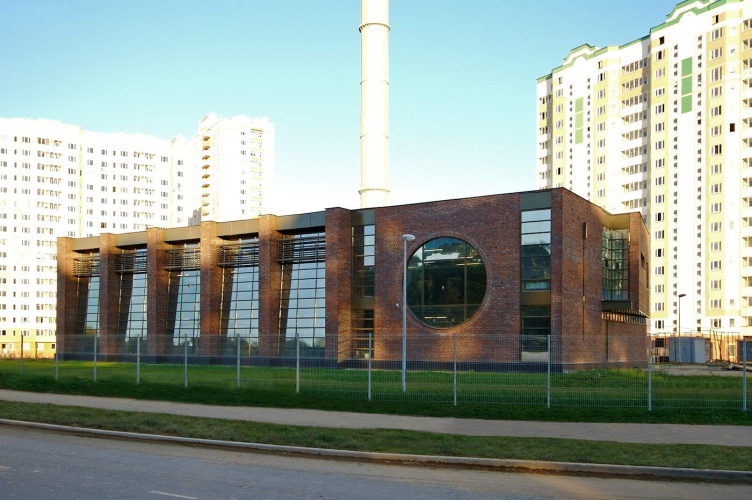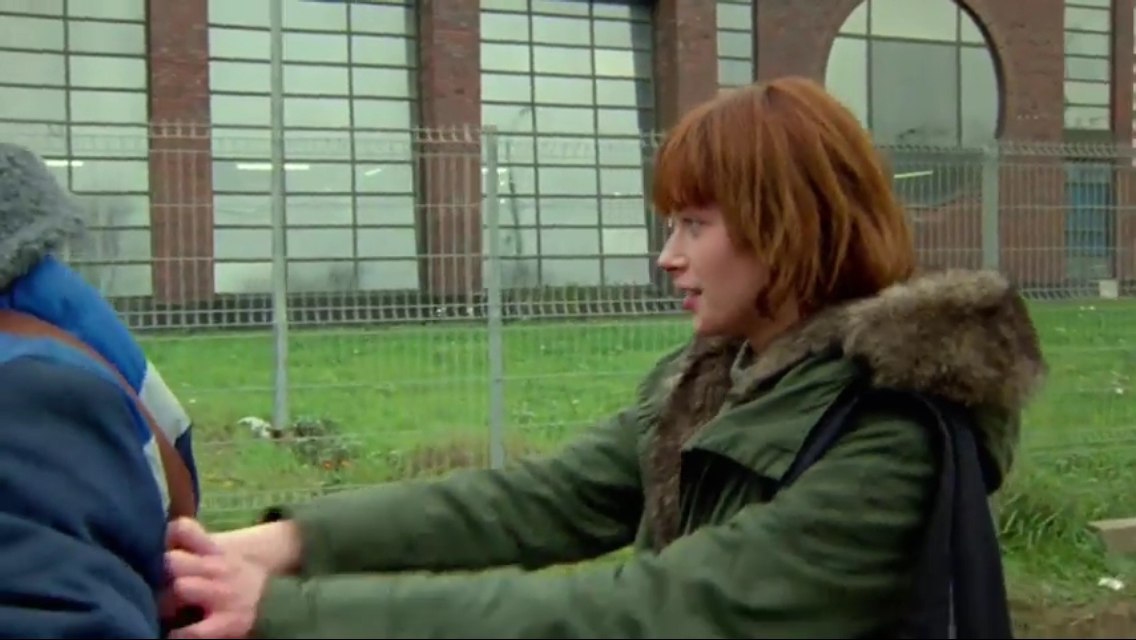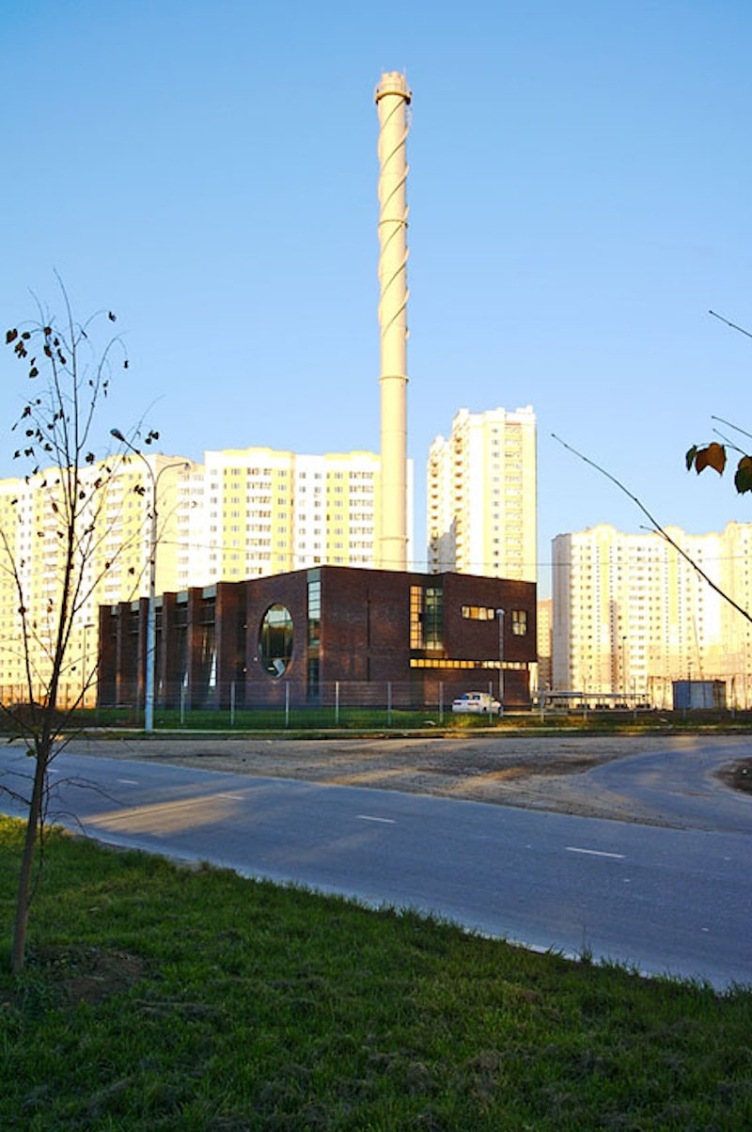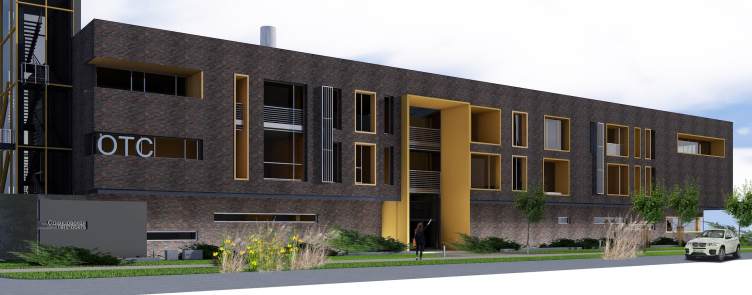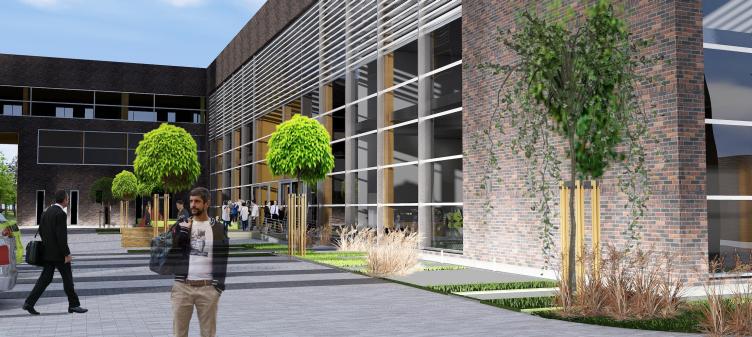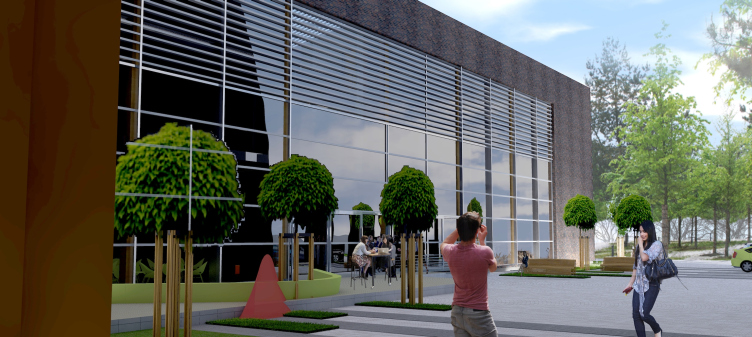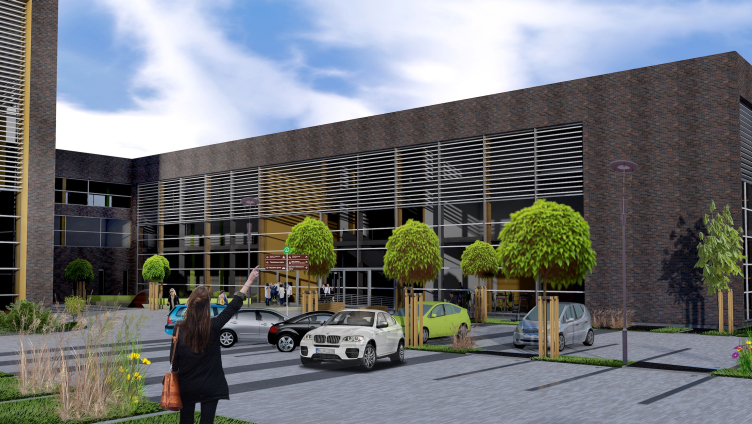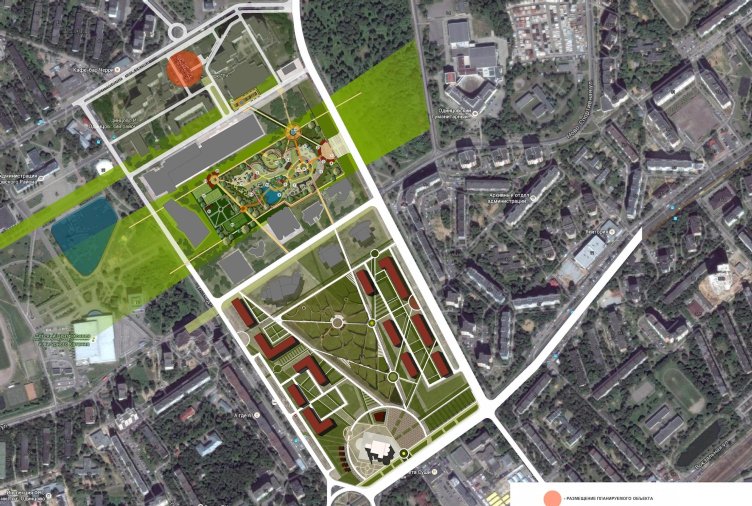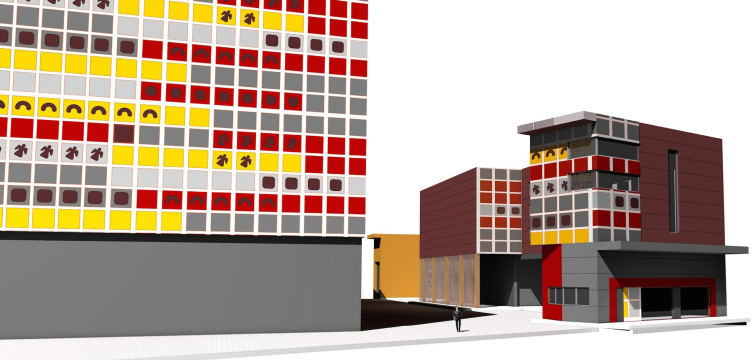1. Industrial architecture: renovation “the way everyone likes it”
Reconstruction of the building on the Timura Frunze Street. Implementation, 2005 © Arkhstroydesign
“Ten years ago our company did a project of reconstructing the façades of Building 11 belonging to the “Red Rose” factory located on the Timura Frunze Street. We view this project as the most typical case of renovating industrial facilities. After a factory is shut down its former buildings are remodeled into housing, offices, exhibition halls, or even museums.
In the course of discussing the project with our client, we defined the three main tasks. The first one was to keep intact the view that opens up from the Zubov Side-street on the Vsevolzhsky Estate that starts a beautiful sightseeing axis from the Garden Ring. Second – we wanted to accentuate the modern treatment for industrial architecture. And, finally, we wanted to come up with a cool-looking “development drawing” front consisting of the red-brick houses standing along the Timura Frunze Street. In order to achieve the first task, we proposed to build a transparent fence made of glass panels. As for the “modernization” effect, we achieved it by using what we called a hi-tech metallic “stool” that marked the main entrance to the future bank. In order to recreate the historical view of the complex, we removed the later-on layers of paint and exposed the brickwork. This way, losing, to a certain degree, in its tectonic quality, the wall took on the modern aspect of a hi-tech fence”.
2. A boiler-house as a popular art object
The boiler-house building. Implementation, 2008 © Arkhstroydesign
“In the course of our work on the project of the boiler-house in the Pavshinskaya flood plain, our client came up with a task of making a cool-looking art object, and he was ready to invest extra money into it, too. As a result, we indeed got a truly photogenic art object that keeps attracting the attention of movie makers and TV crews alike. Our boiler-house has already served as a backdrop in a few different movies, for example, in 2014 Anna Melikyan shot her movie “Zvezda” (“The Star”) there. This boiler-house became a true catalyst for various creative activities.
The shooting of "The Star" movie by Anna Melikyan against a backdrop of the boiler-house 2014 © Arkhstroydesign
We achieved this effect by using the possibilities that the equipment and the hardware inside the boiler-house provided us with. The hardware already looks beautiful as it is – the cast-iron (and now steel) boilers with stainless steel pipes, the intertwined bridges and stairways. All this equipment looks like contemporary design. For each of the boilers, we installed a special “showcase” window, and created a switchboard operator’s office that opens up on the façade in a huge circular window. In order to make the composition still more dramatic, we coated the building with red and dark-brown Belgian hand-molded bricks that go a long way to recreate the image of an old industrial building that has seen much service”.
The boiler-house building. Implementation, 2008 © Arkhstroydesign
3. Industrial architecture as a residential area
The administrative and office building with a heating boiler-house in the town of Odintsovo. View from the Zapadnaya Street. Project, 2015 © Arkhstroydesign
“Seven years later this same client turned to us with a proposition to do a boiler-house on the Sadovaya Street in a Moscow-area town of Odintsovo. Our attitude towards technology as a work of art remained the same but this time we decided to recreate the image of an industrial building as part of residential environment.
The administrative and office building with a heating boiler-house in the town of Odintsovo. Project, 2015 © Arkhstroydesign
The administrative and office building with a heating boiler-house in the town of Odintsovo. Project, 2015 © Arkhstroydesign
The administrative and office building with a heating boiler-house in the town of Odintsovo. Project, 2015 © Arkhstroydesign
The administrative and office building with a heating boiler-house in the town of Odintsovo. Project, 2015 © Arkhstroydesign
In order to alleviate the brutalist aspect that is inherently there in most of industrial projects, we moved the boiler facility inside the land site, placing an extra volume in front of it. The resulting inside yard was turned into a restaurant. And as for the switchboard operator facility, we turned it into an office building with a fitness center and other administrative functions. With the addition of extra buildings, the boiler-house turned into a multifunctional project that can be viewed as a museum or a housing project, or an office center – in other words, as something typically urban”.
The administrative and office building with a heating boiler-house in the town of Odintsovo. Project, 2015 © Arkhstroydesign
The administrative and office building with a heating boiler-house in the town of Odintsovo. Master plan. Project, 2015 © Arkhstroydesign
4. A boiler facility as a city park
The central heat distribution station in Odintsovo © Arkhstroydesign
“And again, in the town of Odintsovo, we remodeled a boiler facility into a heat supply substation as part of a twenty-story building. The location the boiler-house standing on the viewing axis of the Marshala Biryuzova Street required some appropriate design and decoration. What suggested itself was a vertical that would fix the crossing of the pedestrian routes and echoing these pedestrian routes with a few green zones and parks surrounding this building. We decided to raise the boiler-house to the status of the center of the single park zone. Regretfully, this project was to remain on paper”.
The central heat distribution station in Odintsovo. Master plan © Arkhstroydesign
5. Industrial architecture as a means of forming an architectural ensemble
Reconstruction of the bakery and confectionery complex "Prostor". Project, 2015 © Arkhstroydesign
“Contest for the best proposal on reconstructing some of the facilities and façades of “Prostor” Factory that we won working in a team Manipulazione Internazionale in 2015, while still in the project documentation stage, grew into a large-scale reconstruction project that included the addition of several new buildings, in the framework of which we corrected the logistics structure and planning of the territory. In order to avoid getting in the way of the production process, we decided to place a couple of two new buildings on the depth of the yard, where the storage buildings are situated. This is how the south border of the land site got a building with a dormitory for the employees and maintenance facilities, as well as a cold storage building and a storage building for packing materials.
Reconstruction of the bakery and confectionery complex "Prostor". Entrance group. Project, 2015 © Arkhstroydesign
On the yard side, we built new basements that support an extra six-story annex with production and storage functions. The changes were also made to the production facility that got a buildup. The first floor got a specialized store running along the perimeter of the complex”.
Reconstruction of the bakery and confectionery complex "Prostor". The facades of operations and production buildings. Project, 2015 © Arkhstroydesign
Reconstruction of the bakery and confectionery complex "Prostor". The facades of operations and production buildings. Project, 2015 © Arkhstroydesign
Reconstruction of the bakery and confectionery complex "Prostor". Master plan. Project, 2015 © Arkhstroydesign
